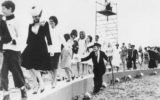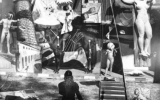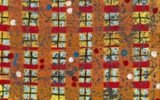Nobel Italian Prize Winners Throughout History: A Story Of Achievement
compiled by Tegan GEORGE
Nobel Italians Prize Winners Throughout History: A Story Of Achievement

compiled by Tegan GEORGE
Nobel Italians Prize Winners Throughout History: A Story Of Achievement

by Laura GIACALONE
Home to many of the world’s largest technology corporations as well as thousands of small startups, Silicon Valley is the place where the future is written. It is no accident that former Google manager and dynamic leader Marco Marinucci has decided to start his new (ad)venture – as he likes to call it – exactly from there.

by Laura GIACALONE
It is generally very difficult to find current data on newly formed companies and their founders. Most official statistics refer to traditional businesses or are generally outdated by the time they are released, which makes it difficult for policymakers and other institutional players to have a better understanding of this phenomenon and address the needs of early-stage business owners.

by Pasquale VERDICCHIO
Given the impressive cultural heritage on constant display along the length and breadth of the peninsula, it seems almost banal to say that Italian culture is highly visual. Francesco Petrarca (1304-1374), considered to be the first “modern” intellectual, gives an unprecedented, detailed description of the human eye as an instrument of visualization and encoding in one of his poems that is as “technologically” accurate as any contemporary description of a photo camera might be today.

by Keith Evan GREEN “The house is never finished” – Gio Ponti’s architectural fables An ‘architect-artist’ true to his name, Gio Ponti (1891-1979, Milan) created connections between architecture, culture and industry, both inside and outside Italy. In bridging various expressive tendencies, Ponti assumed a number of roles himself: architect, industrial designer, set designer, painter, editor, […]

by Patrick RUMBLE
Pier Paolo Pasolini is widely recognized as one of Italy’s most important cultural figures since the Second World War, producing a remarkable body of work since the 1940s, as a writer, poet, dramatist, and filmmaker – perhaps best known for such films as Accattone (1960) and Salò (1975), his classic novel A Violent Life (1955), and the remarkable poems found in The Ashes of Gramsci (1957).

by Marguerite WALLER
A film that will now never be made was going to fill in the story of the forty-eight hours during which Federico Fellini went missing in L.A. just before he received the Foreign Film Oscar for Nights of Cabiria in l958. Sadly, Henry Bromell, a New Yorker-turned-television writer (Northern Exposure, Homicide, I’ll Fly Away, Chicago Hope, Brotherhood, Rubicon, Homeland), died suddenly of a heart attack just as he was due to direct his own script, Fellini Black and White, in which Fellini encounters a Black jazz musician with whom he spends those two days exploring the counter cultures of late 50s Los Angeles.

by Ara H. MERJIAN
Painted in Paris and Ferrara in the mid-1910s, several of Giorgio de Chirico’s Metaphysical paintings like The Seer (1914-15) indeed recall the prosthetic bodies that came to populate Europe’s cities in the wake of the Great War. Perched on a stage-like rostrum like a shop window prophet, The Seer epitomizes de Chirico’s Nietzsche-inspired vow “to see everything, even man, in its quality of thing.”

by James JOHNSON
Niccolò Machiavelli’s Prince is perhaps the purest anatomy of power ever written. The book follows its declared intent in stark terms without fear or hesitation: to show rulers how to succeed in the world as it is, not as it should be.

by Gianluca MARZIANI
The question seems simple: who are the most influential Italian artists in the American context? The answer can also be simple, if we limit the list to include only the giants that the world envies Italy for. If instead we want to test the influences on the present (at the moment that the events occur) or their influences beyond their giant status (in a context outside of their irreplaceable names), it is therefore necessary to define a suitable criterion, a measurement of incisiveness that doesn’t stop with history or the market, but touches on the figurative conscience of the work, the background and backstage of the events, the hidden inspirations, and the deepest linguistic intuitions.